History and Heritage
History and Heritage
Before its independence in 1965, Singapore was a British colony. Britain surrendered Singapore to the Japanese during World War II, who inflicted many atrocities on the people of Singapore, particularly the Chinese, during their occupation, e.g. the Sook Ching massacre. This caused underlying anti-colonial sentiment and resentment among the people, when the British returned to govern after the Japanese Occupation. In 1949, the founding of the People's Republic of China also spurred many Chinese-educated students to join the anti-colonial movement.
Year 1954
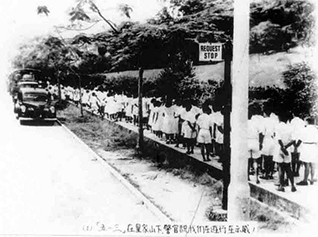
13 May
Students hold a demonstration against the National Service Ordinance.
They march to Government House (Istana Negara) to lodge their protest.
Year 1956
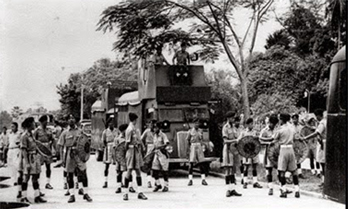
10 October
Radicalised students from Chung Cheng High School (CCHS) and Chinese High
School (CHS) go on strike and occupy their campuses to protest the British
colonial government’s dissolution of the Singapore Chinese Middle School
Students’ Union (SCMSSU) and the arrests of student leaders and trade union
leaders.
12 October
The sit-in persists and the government subsequently closes the two Chinese
schools. It orders students who were not involved and wished to continue
their studies to register on 13 and 14 October for re-assignment to newly
established government Chinese middle schools (GCMS).
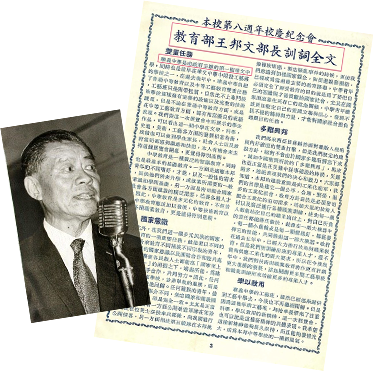
14 October
Hua Yi is officially founded, with Mr Wang Hou Ren as its founding principal.
It becomes one of the first Chinese secondary schools set up by the government.

16 October
First two GCMSs commence classes. These were Hua Yi (华义政府华文中学) and Kallang
West (later renamed Dunman) GCMS. A third school, Gan Eng Seng (later renamed
Thomson) GCMS is set up in November. Hua Yi’s initial student cohort comprised
transfers from CCHS.
These three government-run Chinese middle schools provide education from the secondary to pre-university level and are established to prevent student unrest. This also marks the beginning of a new era in Singapore’s education, as prior to this, Chinese middle schools were established by the Chinese community to promote culture and retain heritage.
Hua Yi is initially set up in an English primary school at Fowlie Road,
with more than 40 staff and 578 students.

December
The first batch of 76 students graduates with the High School Certificate
from Hua Yi.
Year 1957
April
Hua Yi is relocated to Monk’s Hill Primary School at Winstedt Road. Its
enrolment increases to 1,240, and it becomes the GCMS with the largest
enrolment.
Mid-December
Hua Yi moves to a new campus at Margaret Drive, Queenstown.

Year 1958

17 May
Campus is inaugurated by Mr Mohamed Sidik, then-Assistant Minister of
Education. In his inauguration speech, he highlights that Hua Yi is the
first Chinese middle school established by the government (Straits Times,
18 May 1958). Classes begin in early 1958.
Over time, the school expands with the addition of new facilities to the original building, to cater to the growing needs of the students. Hua Yi GCMS rises to become a premier Chinese school, together with Dunman High and River Valley High, excelling at both academics and sports.
Year 1969

15 August
Tree planting is conducted by founding Prime Minister Mr Lee Kuan Yew
at Margaret Drive campus, who is accompanied by then-Principal, Mdm Huang
Shu Fen.
Year 1970s
Hua Yi's enrolment reaches 2,207 students, and is considered one of the top 10 secondary schools in Singapore.
Year 1978
Late 1978
The government introduces the Special Assistance Plan, to preserve Chinese
secondary schools with good traditional values and to cultivate bilingual
talents. Unfortunately, Hua Yi is not among the nine schools selected for
the Plan.
Year 1979
Hua Yi begins English classes, is renamed “Hua Yi Secondary School”, and ceases the enrolment of pre-university students.
Year 1983

March
Due to the progressive increase in student intake, Hua Yi is shifted to
a new, well-equipped campus at Depot Road, with the first underground shooting
range in Singapore.
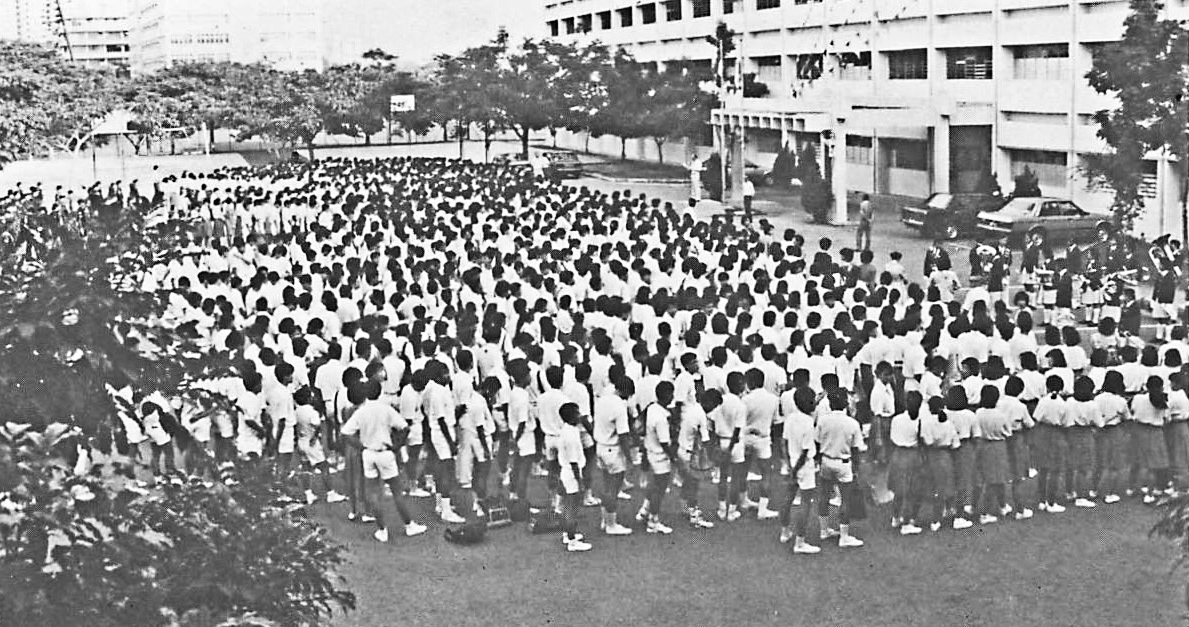
Year 1985

26 April
Campus is inaugurated by then-Member of Parliament for Telok Blangah,
Dr Koh Lam Son.

Year 1987
End-1987
Students of the last batch of Chinese-medium classes graduate at Secondary
5.
Year 1988
Hua Yi becomes an ordinary secondary school, with English as the medium of instruction and Mother Tongue as a second language.
Year 1990s
Hua Yi’s enrolment declines due to an ageing population and inconvenient public transportation in the vicinity, reaching a low of around 200 students in 1999, with the school facing impending closure.
Year 1999
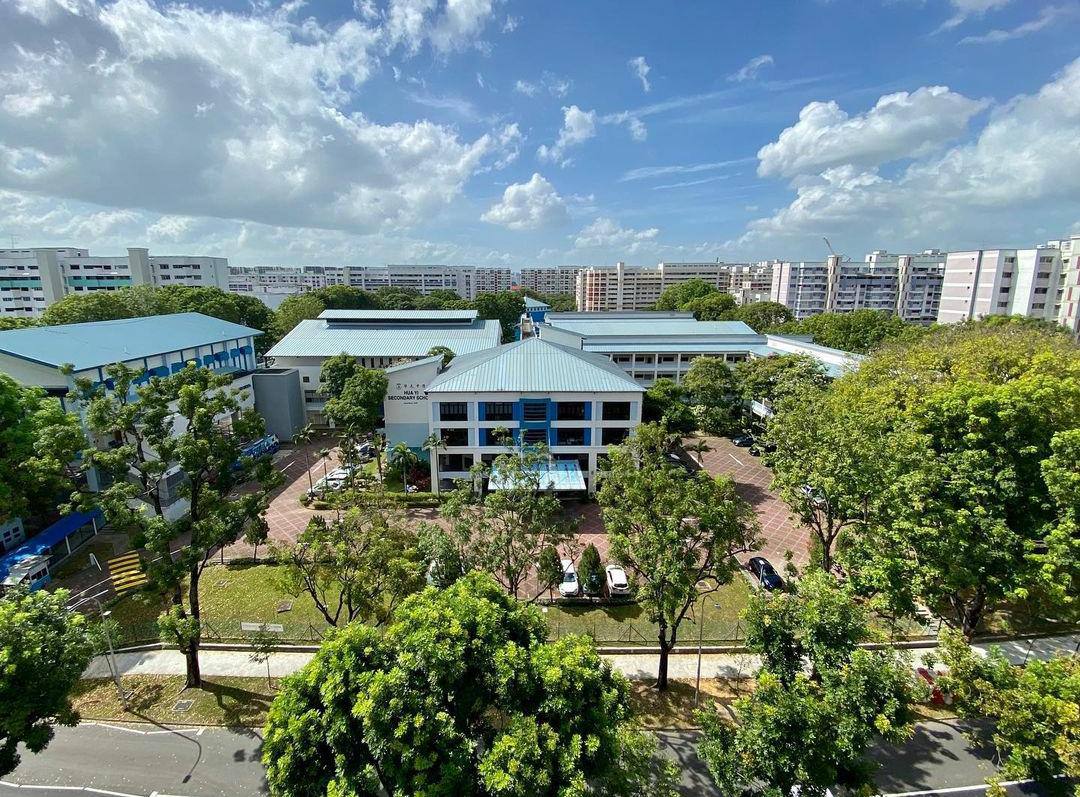
End-1999
The Ministry of Education moves Hua Yi to a densely populated area at
Jurong West Street 42
Year 2000
3 January
Nine Secondary 1 classes commence. Part of the school’s staff is selected
by the Ministry of Education to start Westwood Secondary School, which
then occupies a classroom block in Hua Yi’s premises and shares the rest
of the school’s facilities.
Year 2001
Westwood Sec moves to its own campus approximately 2.4 km away at Jurong West Street 25.
Year 2002
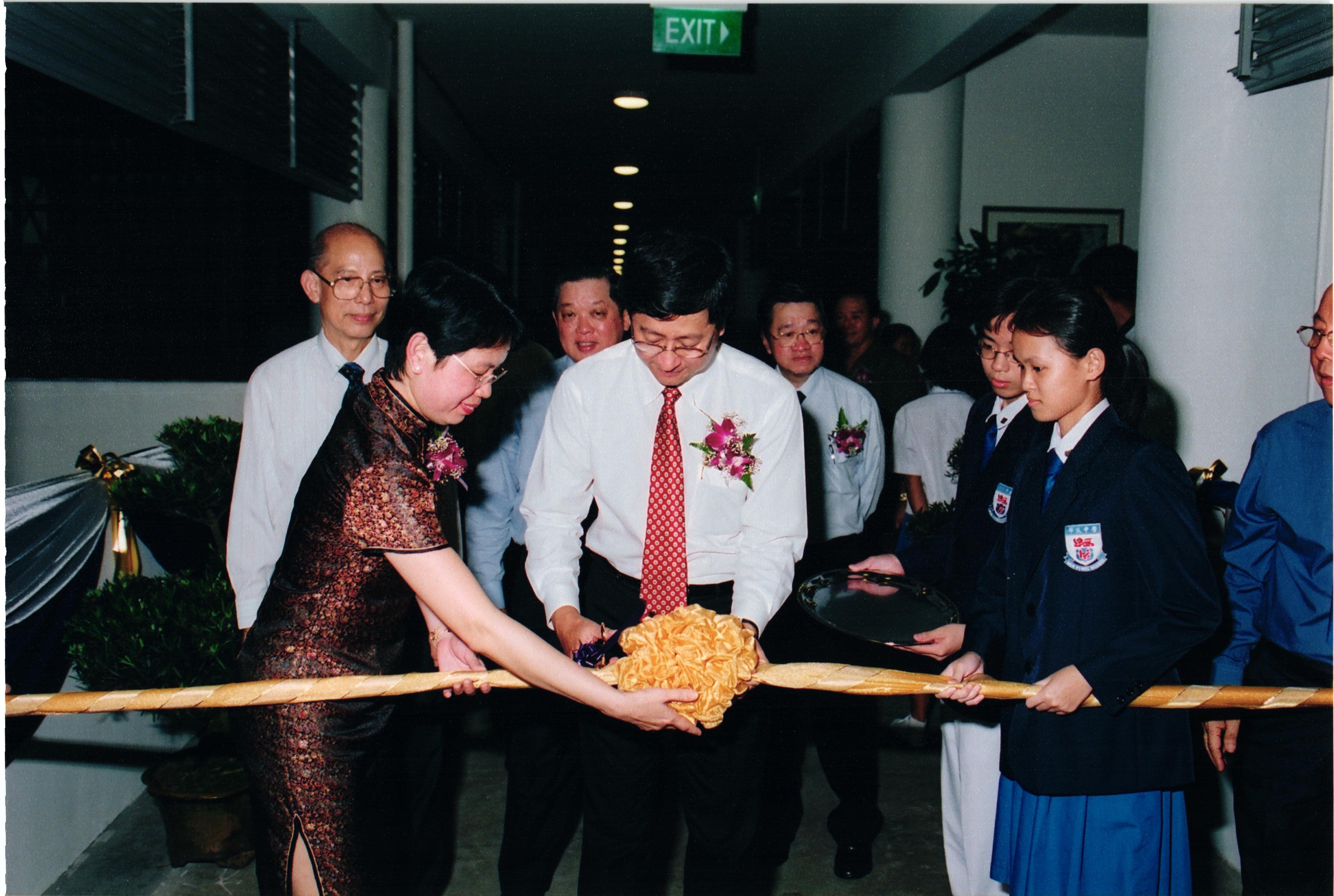
29 June
Campus is inaugurated by then-Minister of the Prime Minister's Office
and Member of Parliament for Jurong GRC, Mr Lim Boon Heng.
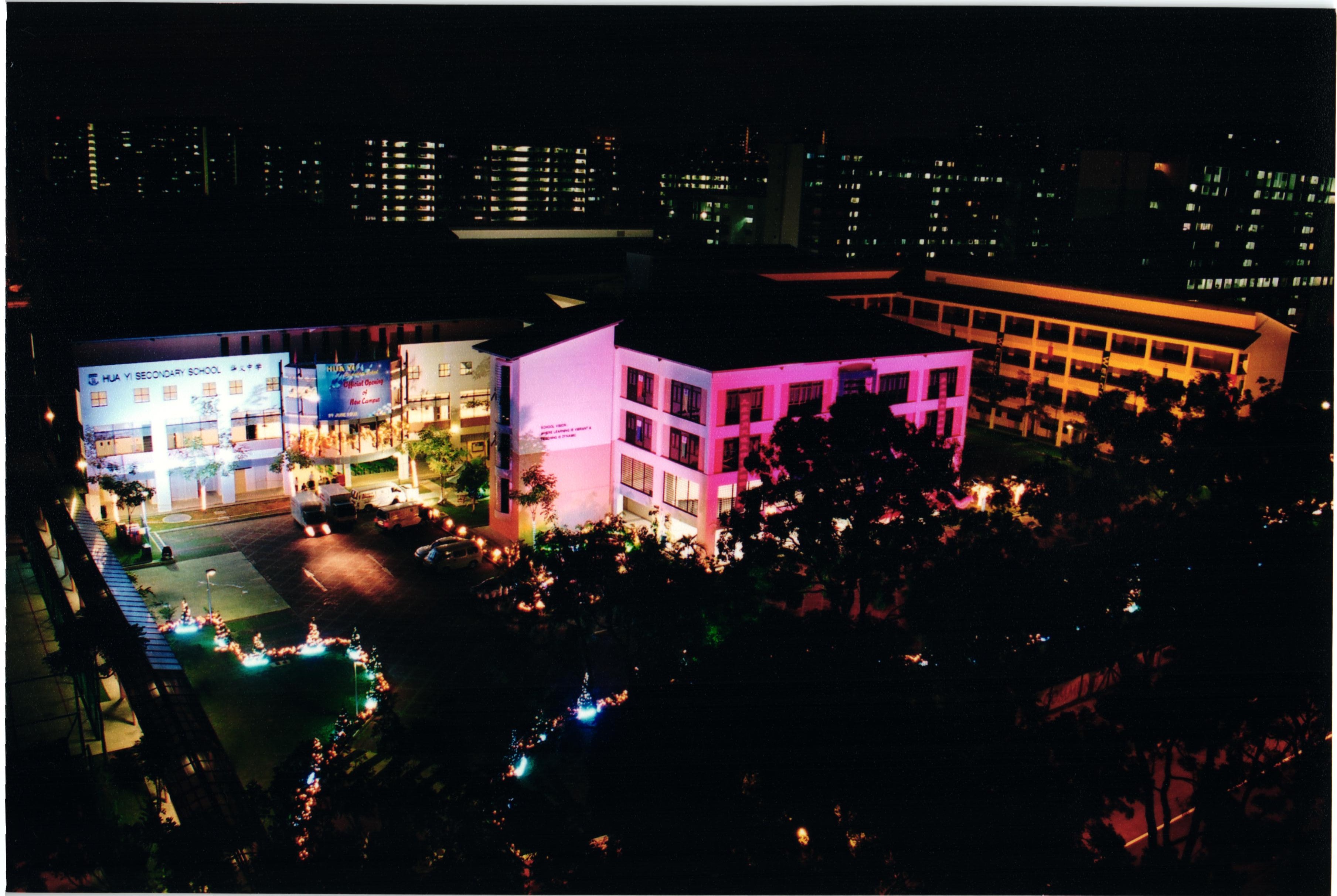
Over the past 60 years, since it first started in 1956, Hua Yi Secondary School (HYSS) has seen five different campuses, with improving facilities and a wealth of historical information. HYSS aims to cultivate and nurture subsequent generations of Hua Yians to be lifelong learners, responsible citizens and having a sense of pride in its rich history and heritage, especially in its original Chinese roots, and to live up to the name of “Hua Yi”.

